Family : Atelidae

Text © Prof. Angelo Messina

English translation by Mario Beltramini
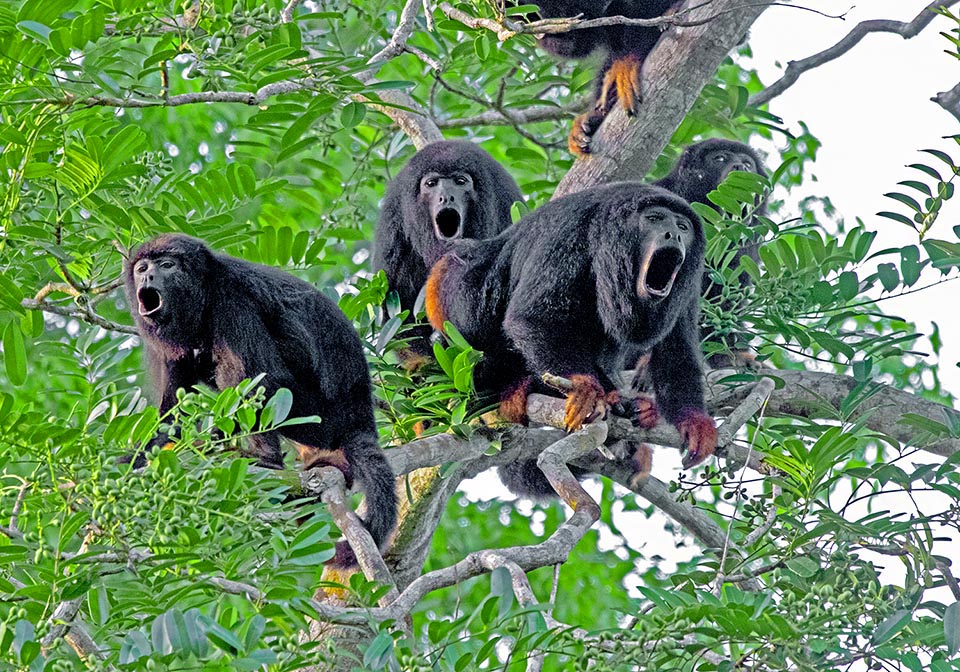
With roar-like sounds, audible even 5 km away, the males of Alouatta belzebul delimit the territory of the group © Thiago Zanetti
Commonly known as Red-handed howler or Howler in the act (Alouatta belzebul Linnaeus, 1766), this species, amongst the biggest monkeys of the New World, is a platyrrhine primate of the family of the Atelidae that owes its own name of howler extended to all congener species, to the particular characteristic of communicating with its own similars by means of particularly strong sounds.
Also the scientific name defining the genus Alouatta originates from the Caribbean dialects meaning “strong voce”, whilst the specific one of belzebul is surely to be related to the vaguely diabolical aspect evoked by the black fur with reddish shades.
Zoogeography
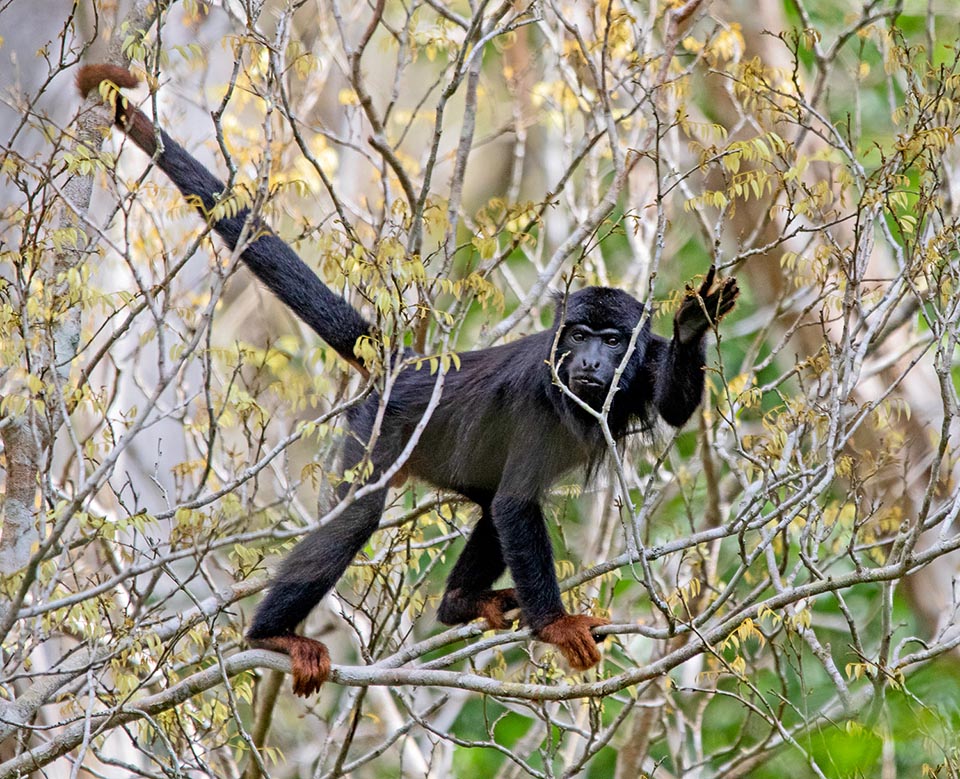
Brazilian forests arboreal species, it owes the specific epithet belzebul to the black and reddish fur, vaguely diabolic, united to a stern face © Thiago Zanetti
Alouatta belzebul is found in the deciduous and rainforest areas of northern and eastern Brazil and in some islands of the Amazon River estuary.
Its distribution area is frequently mistaken for that of Alouatta discolor, by some considered a species and by others a subspecies.
Ecology-Habitat
The Howler in the act is a diurnal animal having arboreal habits that lives in groups usually composed by about 5-20 individuals, led by an alpha male, with various females and possibly also other males in a subordinate position, provided that the ratio between the sexes must always be in favour of the males.
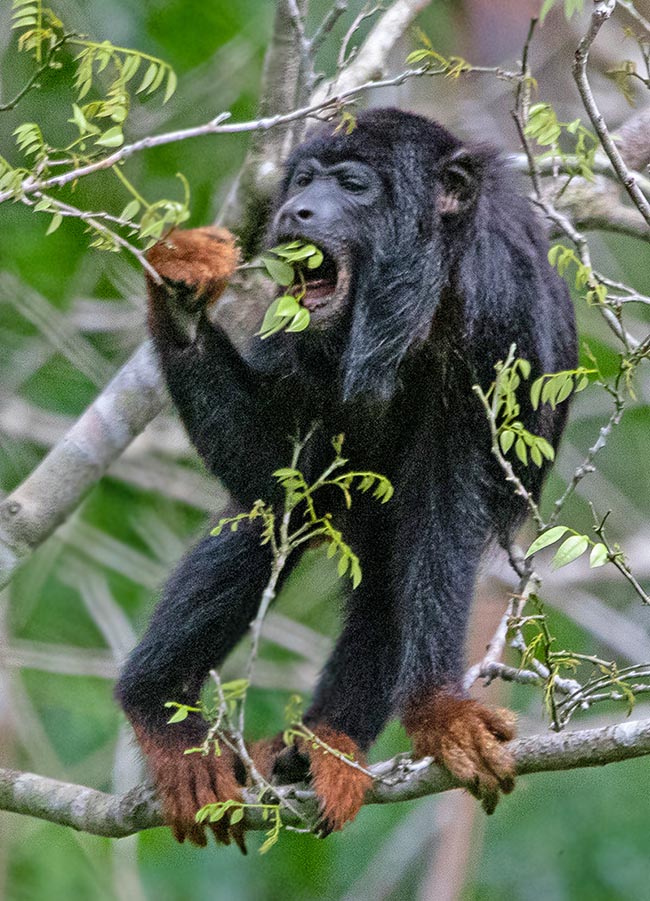
Moving among branches with a quadrupedal-type locomotion, it chiefly eats leaves, but also fruits and flowers © Thiago Zanetti
It nimbly moves among the branches looking for food, formed mainly by leaves, integrated by fruits and flowers, utilizing the quadrupedal type of locomotion and rarely helps with the robust tail. It spends most of its time idle, sleeping with the rest of the group.
Morphophysiology
The peculiarity of this monkey is determined by the presence of a particularly enlarged larynx with the calcified hyoid bone made in a way to allow the animal the emission of particular sounds, comparable to roars in males and grunts in females.
These sounds have chiefly also the function of demarcation and claim of the territory. As a matter of fact, amplified by the enlarged and sacciform larynx, the calls of the so-called Howler monkeys can be heard at up to more than 5 km of distance.
For what the dimensions are concerned, the males of this species are usually slightly bigger than the females and measure about 60-90 cm.
The fur has coarse hair usually of black colour but that in some specimens can get a variable colour, from intense reddish to yellowish; the hands, the feet and the extremity of the tail are often of reddish colour.
This chromartic variability of the fur has been often a source of difficulty and confusions in the taxonomic attribution of the populations.
The face is adorned with a showy beard, particularly thick in the males.
The Howler in the act has a prehensile tail slightly longer than the body, from little less than 60 cm up to almost 1 m, with the lower part glabrous and very sensitive that is utilized as fifth limb while moving among the trees.
Characteristics most distinctive of the species, and in any case of the entire genus, are also the deep jaws and the first two fingers that are opposable to the remaining three.
Of diurnal habits, unlike other Platyrrhines, this species and all Alouatta species have a colour vision.
Ethology-Reproductive Biology
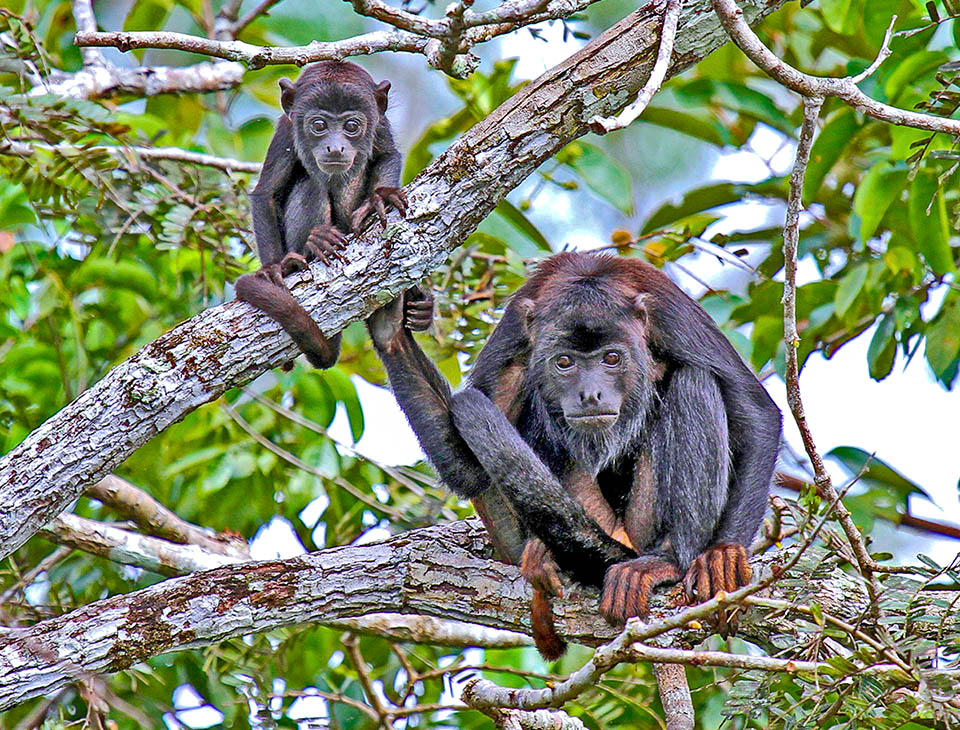
Female with infant. These don’t have the males’ showy beard, don’t roar, and their screams are grunts. Here both have a sulky questioning look © George Lin
The reproduction can take place during the whole year and usually the females deliver only one pup after a pregnancy of about 190 days.
These reach the sexual maturity when 4 years old, whilst the males though getting mature when about 5, reproduce only after having acquired a dominant position inside the group.
It is to be noted that inside a group rarely are found adult specimens related to each other, as the young, when the adult age is reached, tend to abandon the group where they were born to go in search of new communities to join.
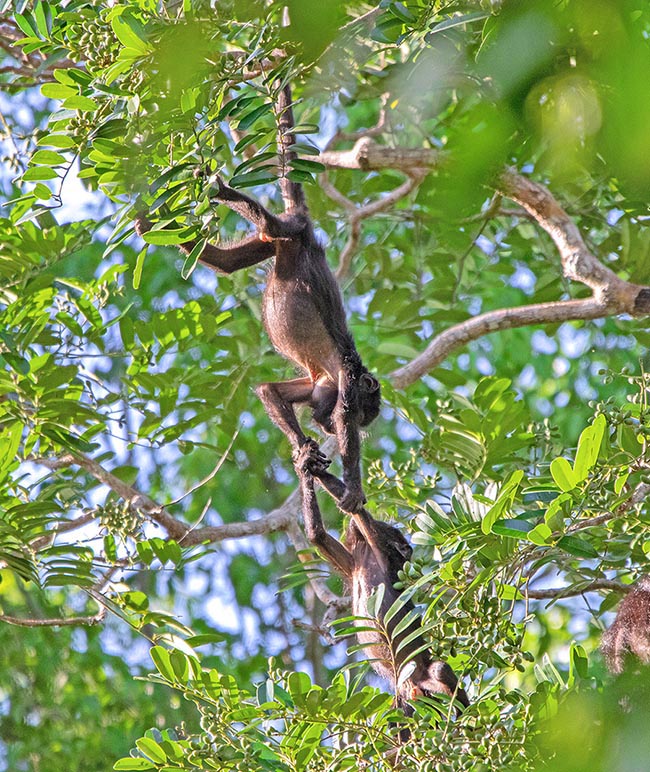
But, found a mate, also these little devils play happily, like all the children in the world © Thiago Zanetti
Taxonomic considerations
About its taxonomic status, this species, as however happens with a certain frequency for a good part of the Primates, is interested also by a remarkable confusion about its actual identity and its possible subspecific division.
In this regard, it must be said that a good part of the distinctive characters so far used, such as the geographic distribution, colour and pattern of the fur, shape of the skull and of the hyoid bone appear to us very uncertain and subjective for attributing them any significant diagnostic values.
Still today, despite recent studies of revision of the genus Alouatta, seem to give evidence in favour of a possible division in at least about ten distinct species.
The doubts remain if Alouatta belzebul of northern and eastern Brazil is to be considered or not as a monotypic species.
Some scholars are in favour of the first hypothesis, assuming that the populations considered as subspecies in a more or less recent past, are now to be raised to the rank of species.
Among these are to be mentioned:
Alouatta discolor Spix, 1823, known as Spix’s red-handed howler, distributed in the western bank of the Xingu River.
Alouatta ululata Elliot, 1912, known as Maranhão red-handed howler, form relegated off the Maranhão coasts.
Alouatta palliata Gray, 1849, with the hair uniformly black and diffused in the forest environments between southern Mexico and western Ecuador.
Alouatta nigerrima (Lönnberg, 1941), called Amazon black howler and typical of central Brazil.
Synonyms
Simia belzebul (Linnaeus, 1766).
→ For general notions about Primates please click here.
→ To appreciate the biodiversity within the PRIMATES please click here.
